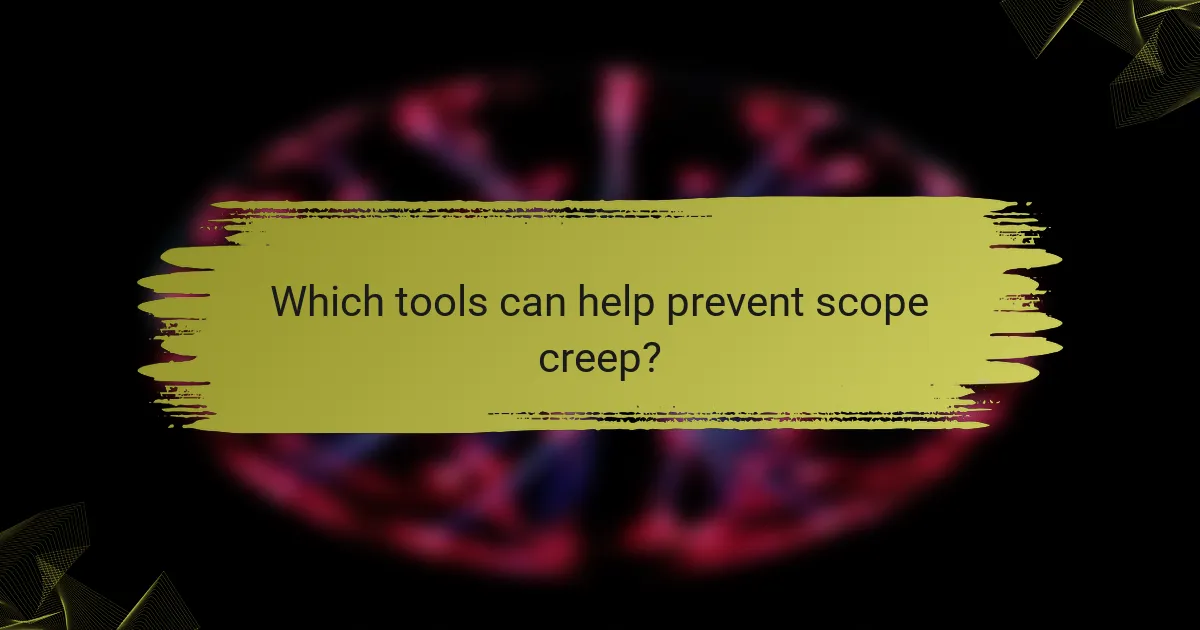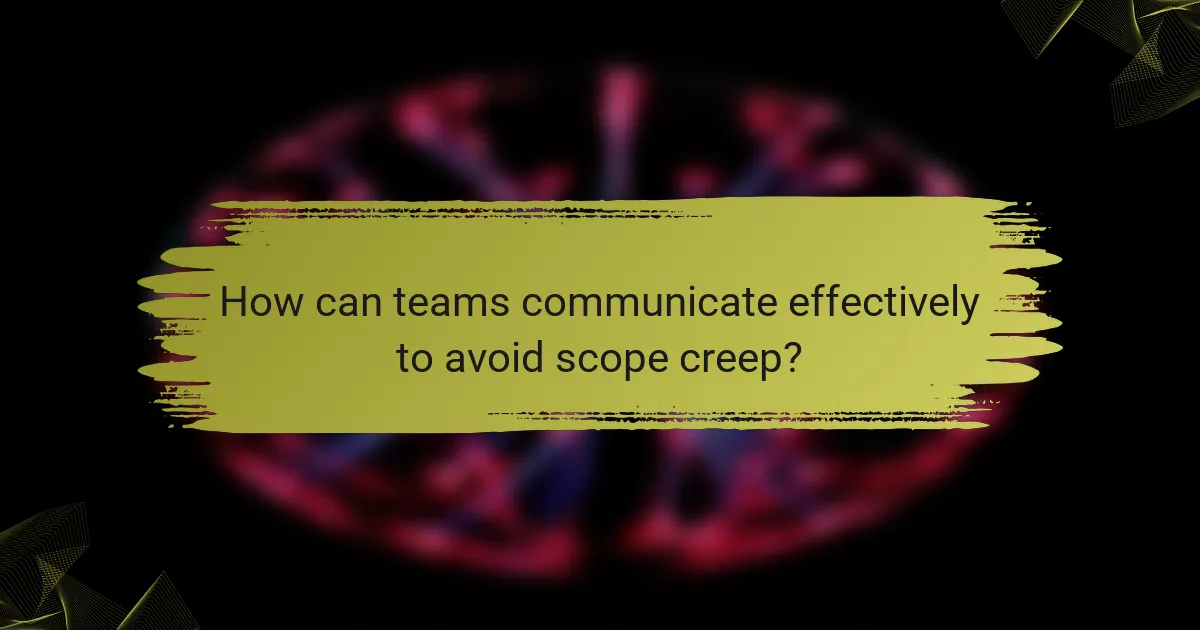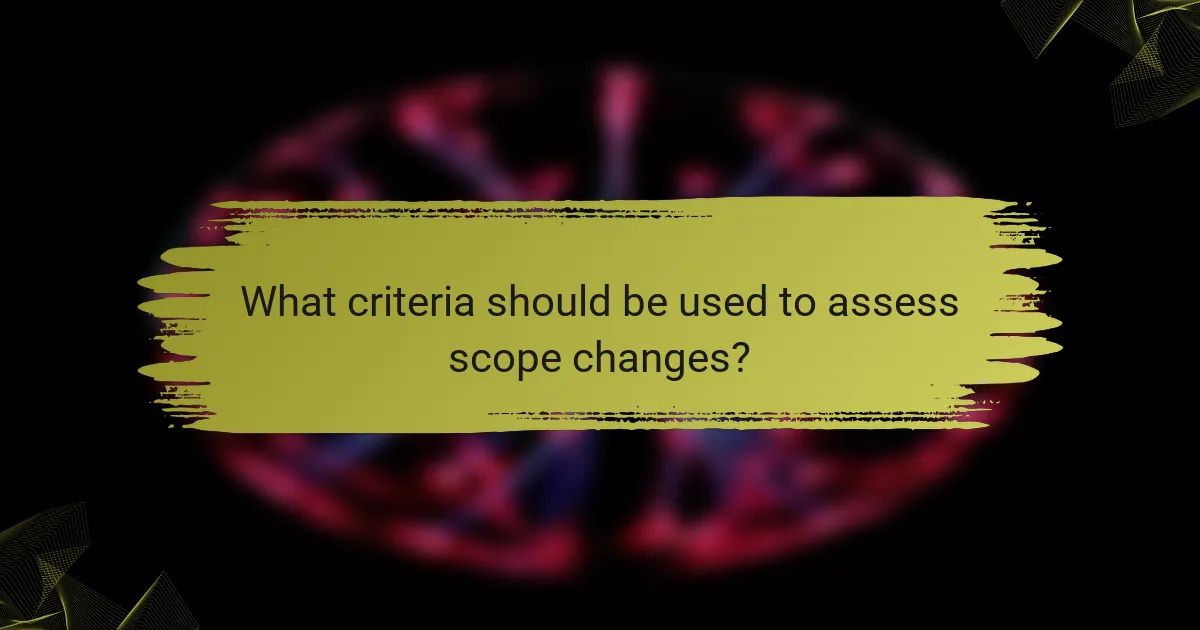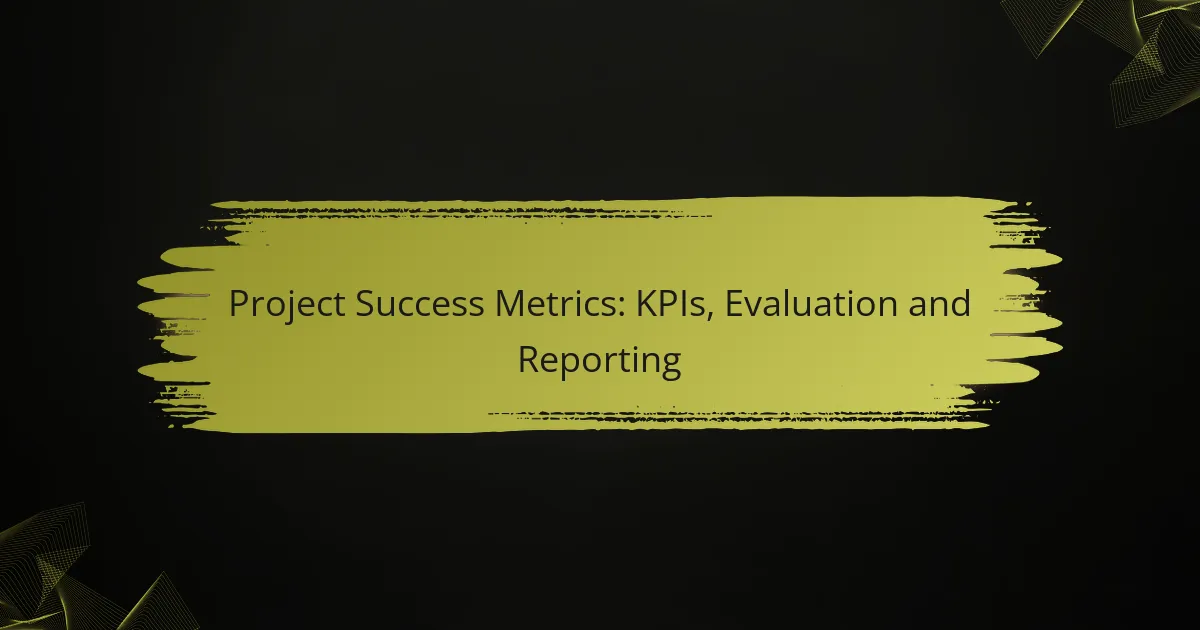Managing scope creep is crucial for the success of any project, as it involves controlling changes to project requirements that can lead to delays and budget overruns. By establishing clear objectives, maintaining open communication with stakeholders, and implementing effective change control processes, teams can keep projects on track. Additionally, utilizing project management tools can enhance visibility and alignment, ensuring that all team members are focused on the agreed-upon goals.

What are effective strategies to manage scope creep?
Effective strategies to manage scope creep include establishing clear project objectives, maintaining regular communication with stakeholders, implementing change control processes, prioritizing tasks, and utilizing project management tools. These approaches help keep projects on track and within budget while minimizing unexpected changes.
Clear project objectives
Establishing clear project objectives is crucial for preventing scope creep. These objectives should be specific, measurable, achievable, relevant, and time-bound (SMART). By clearly defining what success looks like, all team members can stay aligned and focused on the project’s goals.
For example, instead of stating “improve website performance,” a clear objective would be “reduce page load time to under 3 seconds by the end of Q2.” This clarity helps prevent misunderstandings and unplanned changes during the project lifecycle.
Regular stakeholder communication
Regular communication with stakeholders is essential to manage expectations and address concerns promptly. Schedule consistent check-ins, such as weekly meetings or bi-weekly updates, to discuss progress and any potential changes. This keeps everyone informed and engaged, reducing the likelihood of last-minute requests.
Utilizing tools like email updates or project management software can facilitate this communication. Make sure to document decisions and changes discussed during these meetings to maintain a clear record.
Change control processes
Implementing a formal change control process helps manage scope creep by requiring all changes to be documented, reviewed, and approved. This process should outline how changes are proposed, assessed for impact, and communicated to the team and stakeholders.
For instance, a simple change request form can be used to capture details about the proposed change, its rationale, and its potential impact on the project timeline and budget. This ensures that all changes are considered carefully before being integrated into the project.
Prioritization of tasks
Prioritizing tasks effectively helps manage scope creep by ensuring that the most critical elements of the project are completed first. Use techniques like the Eisenhower Matrix or MoSCoW method to categorize tasks based on urgency and importance.
For example, tasks can be classified as Must-have, Should-have, Could-have, or Won’t-have. This prioritization allows teams to focus on delivering essential features while deferring less critical changes that could lead to scope expansion.
Utilization of project management tools
Utilizing project management tools can streamline the management of scope creep by providing a centralized platform for tracking progress, tasks, and changes. Tools like Trello, Asana, or Microsoft Project can help visualize project timelines and responsibilities.
These tools often include features for setting deadlines, assigning tasks, and monitoring changes, which can enhance accountability and transparency among team members. Choose a tool that fits your team’s workflow and encourages collaboration to effectively manage scope creep.

Which tools can help prevent scope creep?
Several tools can effectively help prevent scope creep by enhancing project visibility, facilitating communication, and ensuring that all team members stay aligned with project goals. Utilizing the right software can streamline task management, track progress, and keep stakeholders informed.
Trello for task management
Trello is a visual task management tool that uses boards, lists, and cards to organize projects. It allows teams to create a clear workflow, making it easy to assign tasks and set deadlines. By using Trello, project managers can quickly identify any changes or additions to tasks that may lead to scope creep.
To maximize Trello’s effectiveness, establish clear guidelines for task creation and modifications. Regularly review boards with the team to ensure everyone is on the same page and to address any potential scope changes before they escalate.
Asana for project tracking
Asana is designed for project tracking and collaboration, offering features such as timelines, task dependencies, and progress tracking. This tool helps teams visualize project milestones and deadlines, making it easier to manage scope and avoid last-minute changes.
To prevent scope creep, utilize Asana’s reporting features to monitor project progress and identify any tasks that are falling behind. Encourage team members to communicate any necessary changes early, so adjustments can be made without derailing the project timeline.
Jira for agile project management
Jira is tailored for agile project management, allowing teams to plan, track, and manage software development projects. Its robust features include sprint planning, backlog prioritization, and real-time reporting, which help teams stay focused on their goals and avoid unnecessary scope changes.
To effectively use Jira, ensure that the team regularly conducts sprint reviews and retrospectives. This practice helps identify any scope changes that may have occurred during the sprint and allows for adjustments to be made in future iterations.
Microsoft Project for scheduling
Microsoft Project is a comprehensive scheduling tool that helps project managers create detailed project plans, allocate resources, and track progress. Its Gantt chart feature provides a visual representation of project timelines, making it easier to spot potential scope creep.
To leverage Microsoft Project effectively, set baseline schedules and regularly compare actual progress against these baselines. This practice will help identify deviations early, allowing for timely interventions to keep the project on track.

How can teams communicate effectively to avoid scope creep?
Effective communication is essential for teams to prevent scope creep, which occurs when project requirements expand beyond the original plan. By establishing clear channels and practices, teams can ensure that everyone is aligned on project goals and changes are managed appropriately.
Regular status meetings
Holding regular status meetings helps keep all team members informed about progress and any potential changes to the project scope. These meetings should occur at consistent intervals, such as weekly or bi-weekly, to provide updates and address any concerns promptly.
During these meetings, encourage open dialogue where team members can voice their thoughts on project developments. This approach fosters a collaborative environment and allows for early identification of issues that may lead to scope creep.
Utilizing collaboration platforms
Collaboration platforms, such as Slack or Microsoft Teams, facilitate real-time communication among team members. These tools allow for quick sharing of updates, documents, and feedback, which can significantly reduce misunderstandings and miscommunications.
Additionally, using project management software like Trello or Asana can help track tasks and deadlines, ensuring that everyone is aware of their responsibilities. This visibility can prevent unauthorized changes to the project scope and keep the team focused on the original objectives.
Setting clear expectations
Setting clear expectations from the outset is crucial for avoiding scope creep. This includes defining project objectives, deliverables, and timelines in detail. When everyone understands their roles and the project’s goals, it becomes easier to identify when changes are necessary.
Consider creating a project charter or a scope statement that outlines these expectations. Regularly revisiting and reinforcing these guidelines can help maintain focus and prevent deviations from the agreed-upon scope.

What are the best practices for defining project scope?
Defining project scope effectively is crucial for project success, as it sets clear boundaries and expectations. Best practices include creating a detailed project charter, involving stakeholders in the scope definition process, and thoroughly documenting requirements.
Creating a detailed project charter
A project charter serves as a foundational document that outlines the project’s objectives, scope, and stakeholders. It should include key elements such as project goals, deliverables, timelines, and budget estimates, providing a clear roadmap for the project team.
When developing a project charter, ensure that it is concise yet comprehensive. Use bullet points for clarity and make sure to review it with all stakeholders to gain their input and commitment. This helps prevent misunderstandings later in the project lifecycle.
Involving stakeholders in scope definition
Engaging stakeholders in the scope definition process is essential for aligning project goals with their expectations. This collaboration can help identify potential risks, requirements, and constraints that may not have been considered initially.
Organize workshops or meetings to gather input from various stakeholders, including clients, team members, and management. This inclusive approach fosters ownership and accountability, reducing the likelihood of scope creep as the project progresses.
Documenting requirements thoroughly
Thorough documentation of requirements is vital for maintaining a clear project scope. This includes capturing functional and non-functional requirements, user stories, and acceptance criteria, ensuring that all aspects of the project are addressed.
Utilize templates or tools to standardize the documentation process, making it easier to track changes and updates. Regularly review and update the requirements documentation as needed, and ensure that all stakeholders have access to the latest version to avoid confusion.

What criteria should be used to assess scope changes?
To assess scope changes effectively, consider the impact on project timeline, resource allocation, and budget implications. These criteria help determine whether a proposed change aligns with project goals and constraints.
Impact on project timeline
Evaluating the impact on the project timeline involves analyzing how scope changes will affect deadlines. A minor adjustment may only require a few additional days, while significant changes could extend the timeline by weeks or months.
Use a Gantt chart or project management software to visualize how changes will alter the schedule. This helps in identifying critical paths and potential bottlenecks, allowing for better planning and communication with stakeholders.
Resource allocation considerations
Resource allocation is crucial when assessing scope changes, as it determines whether you have the necessary personnel and materials to implement the modifications. Changes may require reallocating existing resources or bringing in additional team members.
Consider the availability of your team and any specialized skills required for the new tasks. If resources are limited, prioritize changes that offer the most value or consider extending deadlines to accommodate the additional workload.
Budget implications
Scope changes often have direct budget implications, as they can lead to increased costs. Assess whether the proposed changes will require additional funding for labor, materials, or technology.
Establish a clear budget for potential changes and compare it against the project’s original financial plan. This helps in making informed decisions and ensures that stakeholders understand the financial impact of any adjustments.


